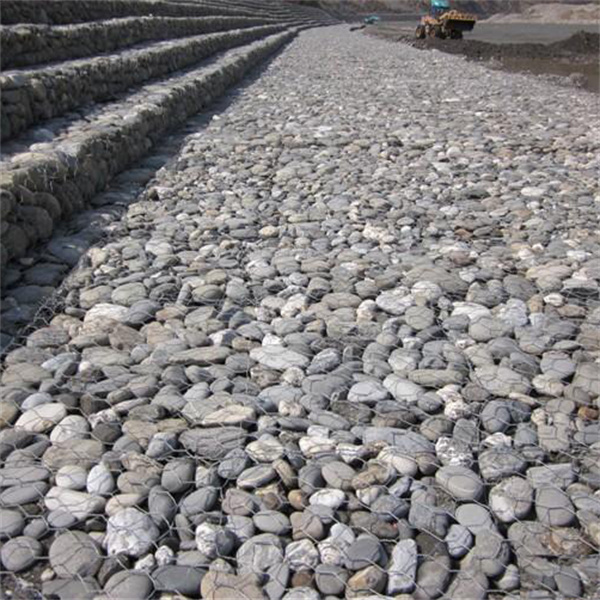Sep . 28, 2024 21:17 Back to list
Creative Uses and Benefits of Gabion Bags in Modern Landscaping
The Versatility and Benefits of Gabion Bags
Gabion bags, often referred to as gabion bags or gabion baskets, are an innovative solution in the field of civil engineering, landscaping, and environmental applications. These robust and versatile structures may seem simple, yet they offer a multitude of benefits for various projects ranging from erosion control to flood management and aesthetic landscaping.
What Are Gabion Bags?
Gabion bags are typically made from woven geotextile materials or wire mesh filled with stones, sand, soil, or other aggregates. Unlike traditional gabion baskets, which are rigid structures, gabion bags are flexible, allowing them to adapt to various shapes and contours. This design flexibility makes them ideal for diverse applications, from stabilizing slopes to constructing retaining walls or even creating decorative features in gardens.
Environmental Applications
One of the primary uses of gabion bags is in erosion control
. In areas prone to soil erosion, these bags can be strategically placed along riverbanks, shorelines, and slopes to provide immediate stabilization. The porous nature of the materials used allows water to flow through while filtering sediments, thus minimizing erosion. As vegetation grows around the bags, they become an integral part of the landscape, promoting ecological balance by providing habitats for small wildlife.Gabion bags also play a significant role in flood management. They can be used to create temporary barriers during flood events, protecting properties and infrastructure from water damage. Moreover, they can assist in managing stormwater by slowing down water flow and allowing it to percolate into the ground, thus reducing runoff and the risk of flooding.
Construction and Durability
gabion bags

In construction, gabion bags are valued for their strength and durability. They can be filled with locally available materials, making them cost-effective. The process of filling the bags is straightforward, and once in place, they require minimal maintenance. The porous design ensures that the bags do not suffer from water buildup, reducing the risk of structural failure over time.
Another significant advantage is their ability to withstand harsh weather conditions. Gabion bags are resistant to extreme temperatures, UV exposure, and even fire, making them suitable for a variety of environments. Their durability means they can be used in long-term projects without the need for frequent replacement, ultimately leading to cost savings.
Aesthetic Appeal
Beyond their functional applications, gabion bags can also enhance the aesthetic value of a landscape. They can be filled with decorative stones, colored gravel, or even local flora, creating visually appealing features in gardens and public spaces. When stacked or arranged thoughtfully, gabion bags can serve as attractive walls, benches, or planters, adding to the overall design of the area.
For landscape architects and designers, gabion bags offer a sustainable solution that combines functionality with beauty. They can be integrated into various design elements, contributing to eco-friendly landscapes that promote biodiversity and sustainability.
Conclusion
Gabion bags represent a merging of practicality and environmental responsibility. Their versatility makes them an essential tool for addressing ecological challenges while also enhancing the aesthetic appeal of various landscapes. As infrastructure demands grow and environmental concerns become more pressing, the adoption of gabion bags will likely increase across numerous sectors. Their ability to provide effective solutions for erosion control, flood management, and sustainable landscaping marks them as invaluable resources in our ongoing efforts to create resilient and aesthetically pleasing environments. Whether used in construction, landscaping, or environmental protection, gabion bags demonstrate that simplicity can lead to profound benefits.
-
Why PVC Coated Gabion Mattress Is the Best Solution for Long-Term Erosion Control
NewsMay.23,2025
-
Gabion Wire Mesh: The Reinforced Solution for Modern Construction and Landscape Design
NewsMay.23,2025
-
Gabion Wall: The Flexible, Seismic-Resistant Solution for Modern Landscaping and Construction
NewsMay.23,2025
-
Gabion Wall Solutions: The Durable, Decorative, and Affordable Choice for Every Landscape
NewsMay.23,2025
-
Gabion Basket: The Durable and Flexible Alternative to Traditional Retaining Walls
NewsMay.23,2025
-
Gabion Basket: The Proven Solution for Slope Stability and Flood Control
NewsMay.23,2025
-
Versatility of Chain Link Fence Gabion
NewsMay.13,2025






